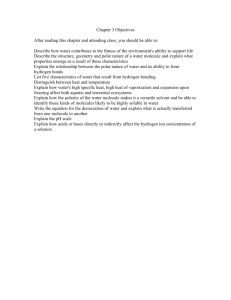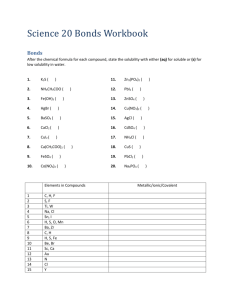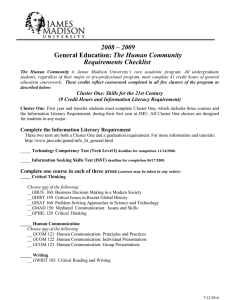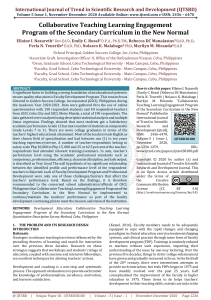lecture ppt
advertisement
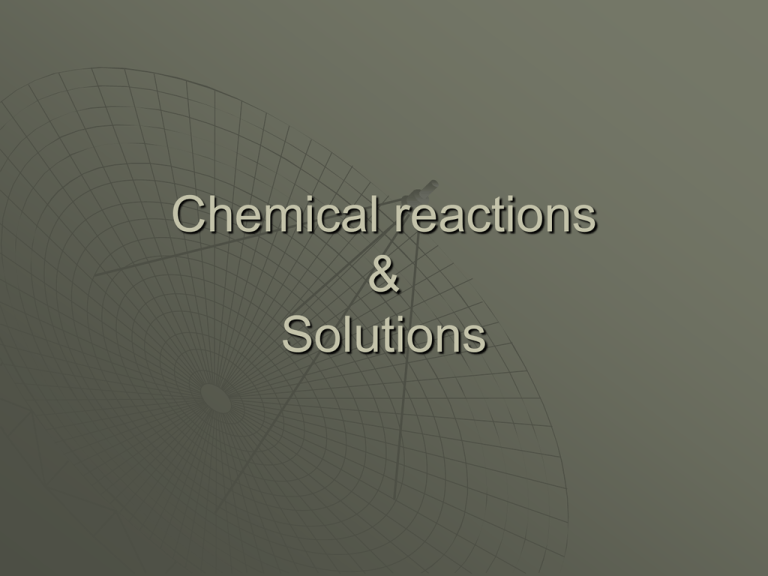
Chemical reactions & Solutions Water Water is a polar molecule Charge is not uniformly distributed. Excess negative charge is found on the oxygen due to its ability to attract electrons. The attraction that results between neutral atoms with a negative charge excess at H is called hydrogen bonding. This attraction gives water many of its properties. March 23, 2016 GSCI 163 Spring 2010 Polar Like dissolves like For polar solutions the attraction of one water molecule for another will squeeze out material that separates the water molecules unless these molecules carry charge. The charge of the intermediate material maintains the attraction and so the material remains. March 23, 2016 GSCI 163 Spring 2010 Sugar ? sucrose, lactose, and fructose Sucrose table sugar • C12H22O11 Note the hydroxide ions OH- C C C C March 23, 2016 C C C C There are several sites on the molecule that tend to have a negative charge. Sugar is therefore a polar molecule C GSCI 163 Spring 2010 C12H22O11 12x12+22x1+16x11=319.99 gm/mole At 0°C, 179 grams of sucrose will dissolve at 100°C. 487 grams will dissolve. 211.5 g/100 ML @ 25oC March 23, 2016 GSCI 163 Spring 2010 Redox Oxidation Reduction Oxidation is the loss of electrons or an increase in oxidation state by a molecule, atom or ion. Reduction is the gain of electrons or a decrease in oxidation state by a molecule, atom or ion. March 23, 2016 GSCI 163 Spring 2010 Two formula approach H2 + F2 -> 2HF [H->H++e-] Fe + CuSO4 → FeSO4 + Cu March 23, 2016 [F +e- ->F-] [Fe->Fe+2 + 2e- ] GSCI 163 Spring 2010 [Cu+2 +2 e- ->Cu]
